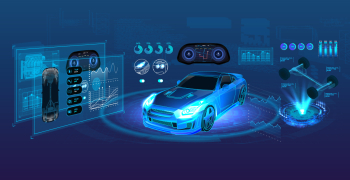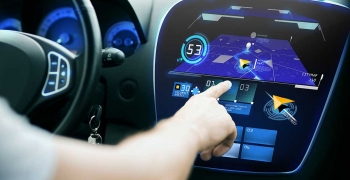We live in an increasingly software-defined world. From handheld gadgets to mighty space rockets, software is ubiquitous. The rise of the Software Defined Vehicle (SDV) is a major step in this direction.
However, most auto OEMs and Tier 1’s continue to struggle with challenges around the time needed to develop systems and processes that can help improve the quality and consistency of their software defined journeys. Mounting concerns from ecosystem stakeholders is, therefore, driving an increased emphasis on merging the best of software development and IT operations – DevOps. An improvement in deployment frequencies, optimal time-to-market, minimal failure rates and lead times, and shorter recovery constitute the core of most DevOps operations.
Enter Automotive Embedded DevOps
Automotive Embedded DevOps refers to the application of DevOps principles and practices to the development of embedded software in the automotive industry. When DevOps is applied to the development of embedded software for vehicles, it involves adapting to the following practices to the unique challenges and requirements of the automotive domain.
List of common challenges that are often faced in the realm of Embedded DevOps:
- Hardware Variability: Dealing with different hardware configurations and ensuring consistency across devices.
- Toolchain and Environment Setup: Setting up toolchains, cross-compilers, and development environments can be complex and time-consuming. Version Control for Firmware: Managing version control and branching strategies for embedded firmware development.
- Continuous Integration and Testing: Integrating embedded systems into CI/CD pipelines and running automated tests.
- Limited Resources: Working with constrained resources like memory, processing power, and storage on embedded devices.
- Real-time Requirements: Meeting real-time constraints and ensuring timely responses in embedded applications. Deployment and Updates: Implementing secure and reliable over-the-air (OTA) updates for embedded devices.
- Debugging and Troubleshooting: Identifying and resolving issues in embedded systems, especially when remote access is limited.
- Security: Addressing security concerns in embedded systems to protect against vulnerabilities and attacks.
- Documentation and Collaboration: Maintaining clear documentation and fostering collaboration between software and hardware teams.
Driving the Future: Automotive Embedded DevOps in Action
Applying DevOps to automotive embedded software development can lead to faster delivery of software updates, improved collaboration, better software quality, and enhanced safety. However, the safety-critical nature of automotive systems requires careful consideration and validation at every step of the DevOps process to ensure that software updates do not compromise vehicle safety or reliability. These practices help ensure the reliability, safety and efficiency of software that controls various aspects of vehicles, from infotainment systems to advance driver-assistance system (ADAS) – helping drive the future of SDVs.
The Automotive Embedded DevOps Practice

To address the challenges in Embedded DevOps, the following approaches need to be managed:
- Standardization: Establish standard hardware configurations, toolchains, and development environments to ensure consistency and streamline the development process.
- Automation: Automate build, test, and deployment processes to reduce human errors and save time.
- Version Control Best Practices: Use version control systems effectively, adopt branching strategies, and enforce code reviews to manage firmware development efficiently.
- Continuous Integration and Testing: Integrate embedded systems into CI/CD pipelines, automate testing (unit, integration, and regression), and use hardware-in-the-loop (HIL) testing when possible.
- Optimization and Profiling: Optimize code for resource-constrained environments, use profiling tools to identify bottlenecks, and ensure efficient resource utilization.
- RTOS and Scheduling: Choose Real-Time Operating Systems (RTOS) that meet your requirements and set up proper task scheduling to meet real-time constraints.
- Secure OTA Updates: Implement secure and robust over-the-air update mechanisms, including secure boot and update authentication.
- Remote Monitoring and Debugging: Use remote debugging tools and techniques to troubleshoot issues in the field.
- Security Best Practices: Follow security best practices, such as secure boot, encryption, and regular security assessments, to safeguard embedded systems.
- Collaboration and Documentation: Foster effective collaboration between hardware and software teams, maintain clear documentation, and use collaboration tools like version control platforms and project management systems.
Charting the Future
While the demand for automotive embedded DevOps expertise and services continues to rise worldwide, we feel that the future will coalesce around three key trends. These include:
- Automotive Embedded DevOps Practice
Automotive Cloud Embedded DevOps refers to the practice of implementing DevOps principles in the development of embedded automotive systems that connect to cloud services. It involves the integration of system and software development and calls for the operations teams to streamline the software development lifecycle – ensuring seamless collaboration, continuous integration, and deployment while focusing on the unique challenges of automotive systems and their connection to the cloud. This approach helps enhance efficiency, quality, and agility in delivering software updates and services to vehicles.
- Automotive On premise Embedded DevOps, and
Automotive On-premise Embedded DevOps refers to applying DevOps principles in the development of embedded automotive systems within a localized, on-premise environment. It involves integrating development and operations practices to streamline the software development lifecycle, focusing on building, testing, and deploying software for vehicles, while keeping everything within the confines of the organization's infrastructure. This approach is suitable when cloud connectivity is not a requirement or when data security and control are of vital importance.
- Automotive Hybrid Embedded DevOps
Automotive Hybrid Embedded DevOps combines both on-premises and cloud-based DevOps practices in the development of embedded automotive systems. It involves integrating development and operations processes to streamline the software development lifecycle, while taking advantage of both on-premises resources and cloud services. This approach offers flexibility, scalability, and the ability to leverage cloud capabilities while also addressing specific requirements and constraints of the automotive industry. It's particularly useful when a combination of local control and cloud connectivity is needed for automotive software development.
We will be exploring each of these areas in some detail in subsequent blogs.




